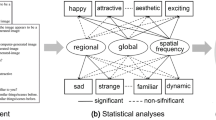Abstract
Humans can determine image quality instantly and intuitively, but the mechanism of human perception of image quality is unknown. The purpose of this work was to identify the most important quantitative metrics responsible for the human perception of digital image quality. Digital images from two different datasets—CT tomography (MedSet) and scenic photographs of trees (TreeSet)—were presented in random pairs to unbiased human viewers. The observers were then asked to select the best-quality image from each image pair. The resulting human-perceived image quality (HPIQ) ranks were obtained from these pairwise comparisons with two different ranking approaches. Using various digital image quality metrics reported in the literature, we built two models to predict the observed HPIQ rankings, and to identify the most important HPIQ predictors. Evaluating the quality of our HPIQ models as the fraction of falsely predicted pairwise comparisons (inverted image pairs), we obtained 70–71% of correct HPIQ predictions for the first, and 73–76%for the second approach. Taking into account that 10–14% of inverted pairs were already present in the original rankings, limitations of the models, and only a few principal HPIQ predictors used, we find this result very satisfactory. We obtained a small set of most significant quantitative image metrics associated with the human perception of image quality. This can be used for automatic image quality ranking, machine learning, and quality-improvement algorithms.



Similar content being viewed by others
References
Geyer LL, Schoepf J, Meinel FG, Nance JW, Bastarrika G, Leipsic JA, Paul N, Rengo M, Laghi A, De Cecco CN: State of the Art: Iterative CT Reconstruction Techniques. Radiology 276(2):339–357, 2015
Jeffrey MPC-S, Woodard P: No-Reference image quality metrics for structural MRI. Neuroinformatics 4, 2006
Serir A, Kerouh F, A no-reference blur image quality measure based on wavelet transform, Digital Information Processing and Communications, 2012.
Lee Y, Matsuyama E, Tsai DY: Information Entropy Measure for Evaluation of Image Quality. Journal of Digital Imaging 21:338–347, 2008
ICRU: Radiation Dose and Image-Quality Assessment in Computed Tomography, vol. 12, O. U. Press, Ed., Journal of the ICRU, 2013.
Crété-Roffet F, Dolmiere T, Ladret P, Nicolas M: The Blur Effect: Perception and Estimation with a New No-Reference Perceptual Blur Metric. Grenoble: SPIE Electronic Imaging Symposium Conf Human Vision and Electronic Imaging, États-Unis d'Amérique, 2007
Choi MG, Jung JH, Jeon JW: No-Reference Image Quality Assessment using Blur and Noise. International Scholarly and Scientific Research & Innovation 3(2):184–188, 2009
Information theory, Wikipedia, [Online]. Available: https://en.wikipedia.org/wiki/Entropy_(information_theory). [Accessed 01 02 2018].
De K: A new no-reference image quality measure to determine the quality of a given image using object separability, Taipei: Machine Vision and Image Processing (MVIP), 2012 International Conference on, 2012.
Chen F, Doermann D, Kumar J: Sharpness estimation for Document and Scene Images, in Pattern Recognition (ICPR), 2012 21st International Conference on, Tsukuba, 2012.
Chen JBC: A blind reference-free blockiness measure, Shanghai: in Proceedings of the Pacic Rim Conference on Advances in Multimedia Information Processing: part I, 2010
Fractal Dimension, Wikipedia, [Online]. Available: https://en.wikipedia.org/wiki/Fractal_dimension. [Accessed 01 02 2018].
Tanaka M, Okutomi M, Liu X: Noise Level Estimation Using Weak Textured Patches of a Single Noisy Image, IEEE International Conference on Image Processing (ICIP), 2012.
Zheng X, Hu X, Zhou W, Wang W, Yuan T: A method for the evaluation of image quality according to the recognition effectiveness of objects in the optical remote sensing image using machine learning algorithm. PLoS ONE, 2014
Elo AE: 8.4 Logistic Probability as a Rating Basis. The Rating of Chessplayers, Past & Present. NY: Press International, 2008
Author information
Authors and Affiliations
Corresponding author
Rights and permissions
About this article
Cite this article
Pianykh, O.S., Pospelova, K. & Kamboj, N.H. Modeling Human Perception of Image Quality. J Digit Imaging 31, 768–775 (2018). https://doi.org/10.1007/s10278-018-0096-5
Published:
Issue Date:
DOI: https://doi.org/10.1007/s10278-018-0096-5




